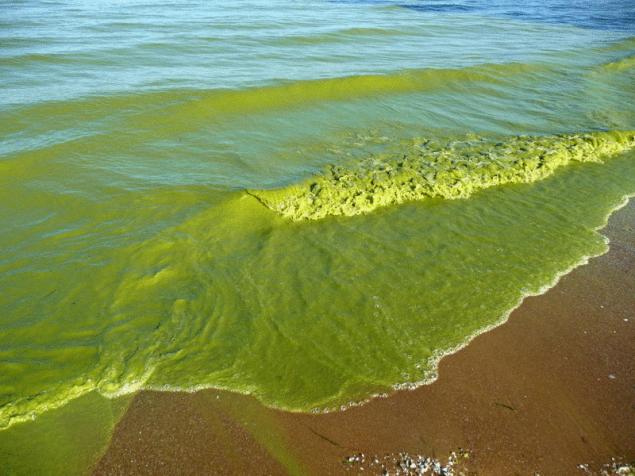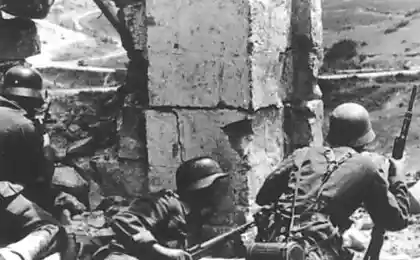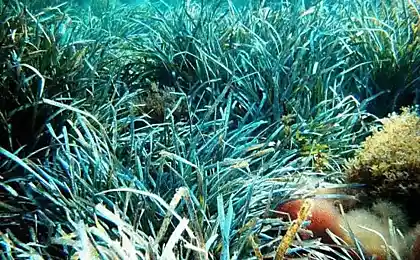383
The lower don is threatened by toxic algae
In the warm season the water in the don acquires a characteristic "fish" smell, which it owes not so much the fish as algae. Algal "bloom" can see – and smell – each, is it not only because of the hot weather, but also because of the abundance of organic substances flowing into the river untreated domestic sewage.

Under optimal conditions, microalgae can grow rapidly and multiply, and to double its biomass in just one day. When "bloom" of water, their number in one cubic meter is millions of cells, and the weight reaches hundreds of grams! Blue-green algae accumulate on the surface of the water, forming a jelly-like layer up to half a meter thick. With a strong East wind and low water levels in the don this mass of algae are able to clog filters of water intake stations of the don villages and cities. On the Lower don, the situation is aggravated by the low water availability which is observed for 10 consecutive years.
To understand the scale of the problem, you may recall 2009 when the algae down came the water station of Volgodonsk and Tsimlyansk, about 200 thousand people for a week remained without water. Now, according to the Chairman of the southern scientific center, Russian Academy of Sciences (SSC RAS), academician Gennady Matishov, local authorities need to pay attention to the condition of the intakes, conduct ongoing monitoring and develop measures in case of emergency.
The problem with algae is aggravating that some of them can be toxic. In August the expedition, the SSC found the green and potentially toxic blue-green algae in the Lower don and the Taganrog Bay. Laboratory studies have shown that don in blue-green algae of the genus Microcystis is the microcystin poison that attacks the liver and nervous system of the fish and accumulate in human tissues. The number of Microcystis can reach extreme values. In August, the biomass of this species amounted to more than 200 g/m3. Other freshwater blue-green Alga, Aphanizomenon, produces paralytic neosaxitoxin, which again can be accumulated in shellfish and fish, thereby presenting a threat to humans.
Of course, to get a significant dose of toxic substances, you need to drink hundreds of litres of raw river water or eat several dozen kilograms of fish or shellfish. However, many people have in the diet of river fish, and the poison it may contain, as mentioned, tends to accumulate. Yes, and the degree of water purification may be different, and bottled, purified well water is not available to everyone.
Veronica Belotserkovsky
Source: nkj.ru

Under optimal conditions, microalgae can grow rapidly and multiply, and to double its biomass in just one day. When "bloom" of water, their number in one cubic meter is millions of cells, and the weight reaches hundreds of grams! Blue-green algae accumulate on the surface of the water, forming a jelly-like layer up to half a meter thick. With a strong East wind and low water levels in the don this mass of algae are able to clog filters of water intake stations of the don villages and cities. On the Lower don, the situation is aggravated by the low water availability which is observed for 10 consecutive years.
To understand the scale of the problem, you may recall 2009 when the algae down came the water station of Volgodonsk and Tsimlyansk, about 200 thousand people for a week remained without water. Now, according to the Chairman of the southern scientific center, Russian Academy of Sciences (SSC RAS), academician Gennady Matishov, local authorities need to pay attention to the condition of the intakes, conduct ongoing monitoring and develop measures in case of emergency.
The problem with algae is aggravating that some of them can be toxic. In August the expedition, the SSC found the green and potentially toxic blue-green algae in the Lower don and the Taganrog Bay. Laboratory studies have shown that don in blue-green algae of the genus Microcystis is the microcystin poison that attacks the liver and nervous system of the fish and accumulate in human tissues. The number of Microcystis can reach extreme values. In August, the biomass of this species amounted to more than 200 g/m3. Other freshwater blue-green Alga, Aphanizomenon, produces paralytic neosaxitoxin, which again can be accumulated in shellfish and fish, thereby presenting a threat to humans.
Of course, to get a significant dose of toxic substances, you need to drink hundreds of litres of raw river water or eat several dozen kilograms of fish or shellfish. However, many people have in the diet of river fish, and the poison it may contain, as mentioned, tends to accumulate. Yes, and the degree of water purification may be different, and bottled, purified well water is not available to everyone.
Veronica Belotserkovsky
Source: nkj.ru
Scientists have discovered hundreds of places of methane emissions in the Arctic Ocean
Schizophrenia, according to scientists, brings joy






















